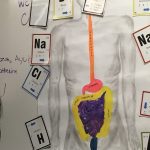Part 1: Read for accuracy
Link to “Break the Fake” Lesson Activity
Part 2: Be a stronger reader
How to improve your reading:
Read for 20 minutes each class:
1. Read to yourself ~ 10 MINUTES
2. Listen to someone else read to you take turns and Read to someone else
3. Listen to a more fluent reader
4. Figure out words and concepts that are new to you
5. Write down what you learned – What stuck
Reading as a Process
You likely think of reading as a one-step event: you pick up a book or article and read it. Experts on reading, however, suggest that a multi-step process can make you a more efficient and critical reader.
Step 1: Preview the source to get a sense of what it will offer
Step 2: Read for understanding and analysis
Step 3: Reflect and takes notes on the reading
Keep in mind that how you accomplish each of these steps will differ depending on what kind of source you are reading
18 warm up activities before you read text
Some things to read:
Spring 2024:
Eco Anxiety_CBC Kids
Fall 2022:
Reading #1: How to debate a Science Denier
Summer 2022:
Reading #1: Lulu & Nana _Genetic Engineering Case Study
“Lulu and Nana open Pandora’s box far beyond Louise Brown”
Reading #2: Take the Jump Challenge – 6 shifts to protect the earth
Spring 2022
Reading #1: Scientific America “Climate Change will Boost Viral Outbreaks”
Reading #2: Continental Drift Versus Plate Tectonics (from National Geographic).
Fall 2022
Reading 1: Scholastic world of science – student choice
Reading 2: Coronavirus entering and replicating in a host cell

Reading 3: Chromosomes XX Vs Xy from Genetics 101
Reading #4: Sperm Count among western men
Vocabulary Development_ Frayer Model
Reading #5: Nurdles: The worst toxic waste you probably never heard of
Reading #6: Ocean Heat Content
Reading #7: Arctic Sea Ice News and Analysis




